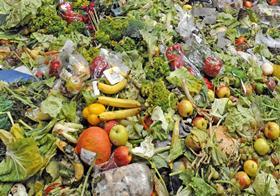
Retailers have met targets to reduce packaging waste by 10 per cent and supply chain product loss by 7.2 per cent, according to the latest Wrap figures.
However, the results, published today, also show that targets to reduce household waste by 4 per cent were not met as the final outcome was 3.7 per cent.
The figures are taken from the period between 2009 and 2012 and are part of the second phase of the Courtauld Commitment, a waste reduction plan run by Wrap.
Results were measured against targets to reduce household food waste, packaging and waste within the grocery retail supply chain by the end of 2012.
The British Retail Consortium (BRC) said that the data shows that retailers have made major strides to cut waste across the supply chain.
BRC head of environment Alice Ellison said the 10 per cent reduction in packaging waste is a significant achievement. “It builds on the progress made by retailers and manufacturers under the Courtauld phase 1 target, between 2005 and 2010,” she said.
“These results show that retailers achieved a great deal against very challenging targets. It’s particularly pleasing to see that the supply chain waste target has been smashed so comprehensively – this was a really ambitious goal which required significant change to existing processes, so it’s great to see that these efforts have paid off.”
Ellison said that while results suggest a shortfall on reduction of household food waste, the progress made is still impressive as there were an extra 660,000 households within this time period.
She highlighted a wider range of portion sizes, clear storage advice and recipe ideas as successful approaches taken by retailers to cut avoidable food waste.
She said: “These results demonstrate what can be achieved when retailers and manufacturers work together and share best practice across the grocery supply chain. This momentum will be maintained as signatories work to meet new targets to 2015 under Courtauld Commitment 3.”
The Courtauld Commitment is a voluntary agreement aimed at improving resource efficiency and reducing the carbon impact of the UK grocery sector.
It was launched in 2005 as a collaborative solution between retailers, brands and suppliers.
The third phase began in May 2013 and runs until 2015. It aims to reduce the weight and carbon impact of household food waste, grocery product and packaging waste, both in the home and the UK retail sector, by 4 per cent by 2015.



